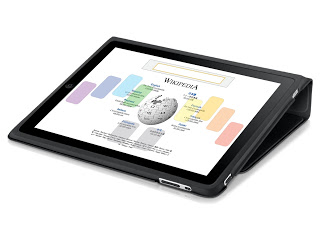ASETNIOP Keyboard: A Revolutionary Keyboard For People With Disabilities
The QWERTY keyboard has been around for ages and is the de facto standard for all devices we use that involve typing. However, it may be does not provide too much flexibility to people who may have visual impairment, not so good motor skills or over flexible joints (think Ehlers-Danlos syndrome). Of course, another limitation, if I may, of QWERTY keyboards is that it if it’s being used on a touch device like a tablet, it occupies a substantial amount of real estate which may be frustrating for people with low vision who may want to see a larger amount of enlarged text at a time on the screen.
To solve all these problems, and to essentially allow users to type wherever they want to (that’s a bold statement, isn’t it?!), Zack Dennis has devised the smarter, flexible ASETNIOP keyboard that only consists of 10 (one for each finger) invisible keys! A single tap on the eight “finger” keys produce one of the ASETNIOP characters, and the two thumbs are used for “space”, “enter” etc. The rest of the letters are produced by pressing two fingers at the same time – a two key combo, if you will, which are known as chords. These chords can be used to store commonly used words, automatic correction, and text predictions. With the ASETNIOP keyboard, what matters is which fingers are pressed down.
The best part about this keyboard is that its size can be adjusted to provide ample space for all ten fingers to press down comfortably. The visualization below depicts how uniformly the finger taps are distributed across the keyboard.
To watch a demo of this keyboard, watch the following video:
The ASETNIOP keyboard is available for the desktop and the iPad. Give it a shot!
Website: http://asetniop.com/
Read the full press release for more exciting information and to see a demonstration of someone typing 83 wpm on the ASETNIOP keyboard!




Even before computers became ubiquitous, chording appeared to be the next logical step after typewriter input. So far, though, the technique has always been too hard to learn. ASETNIOP sounds like, at the very least, a big step in the right direction. Incorporating a sprinkling of pedagogy is a smart move!
Smith
Quality Web Programmers
thanks very much for your large information .and knowledge full description . i think it is sus a topi that many kinds of people face many problem. thanks for this.
Information visualization Low
The instructions are obscure. How can the keyboard know which hand is pressing a key? What exactly are partials? Is anyone actually using this keyboard?